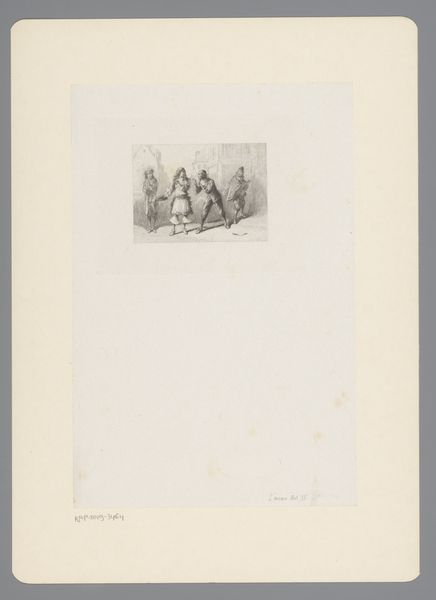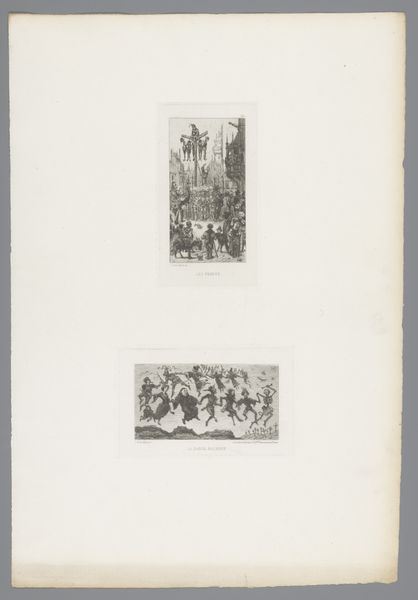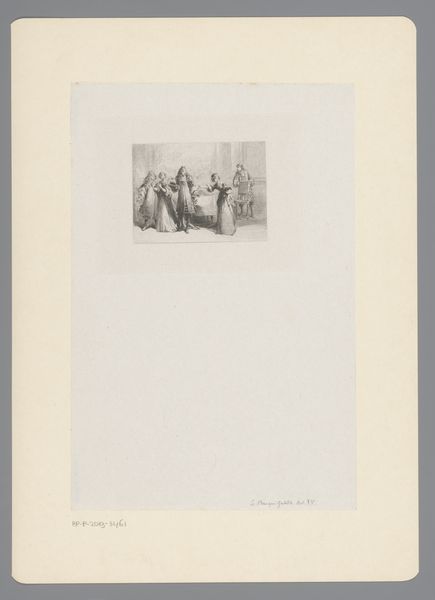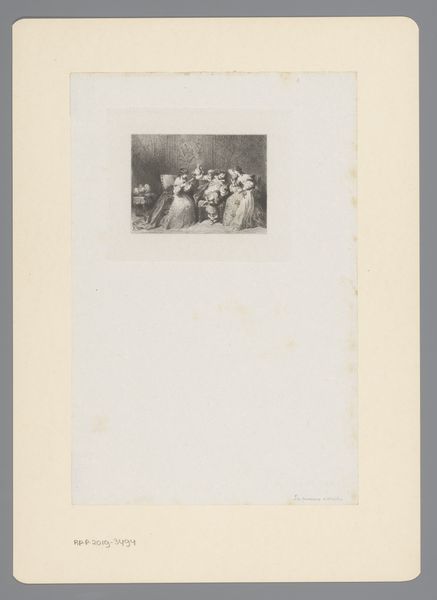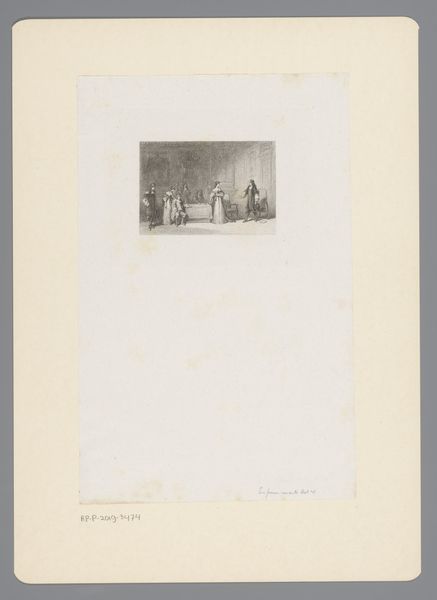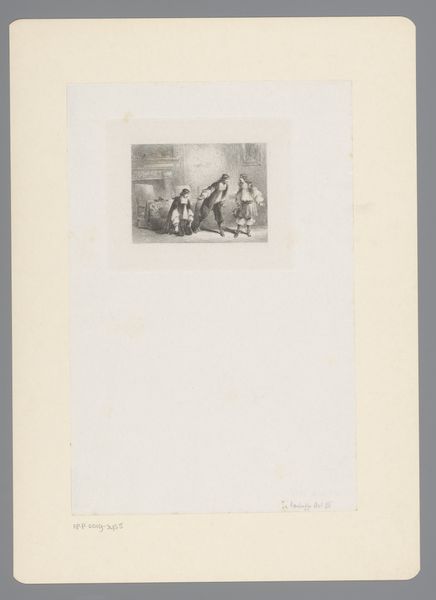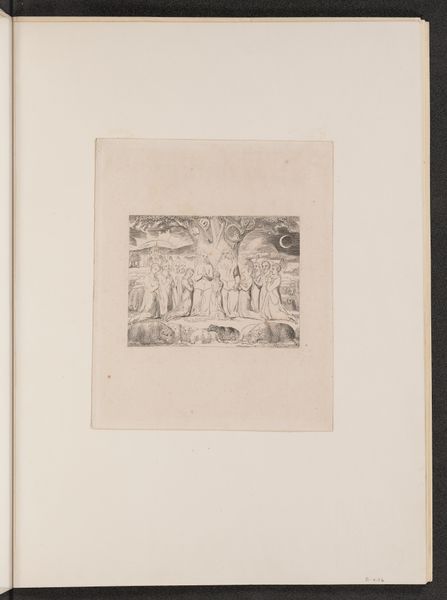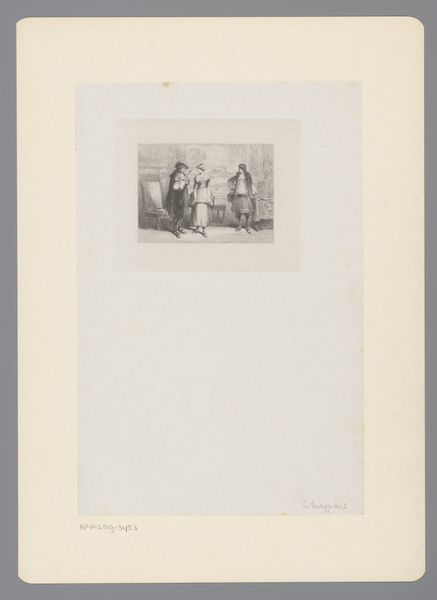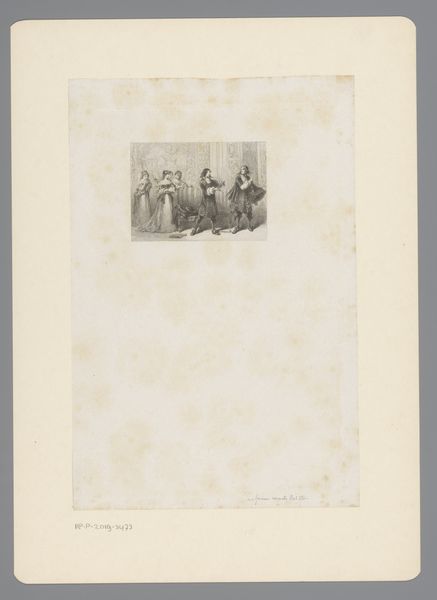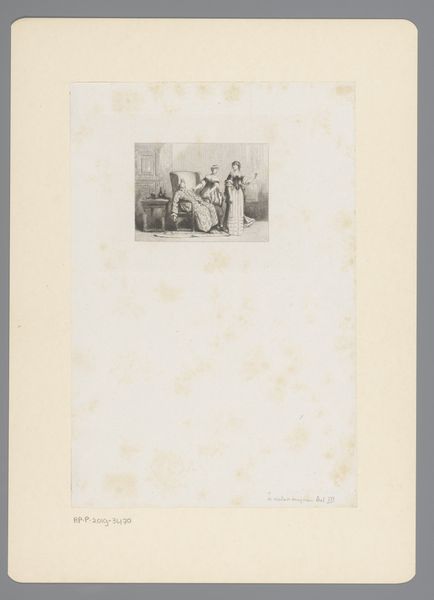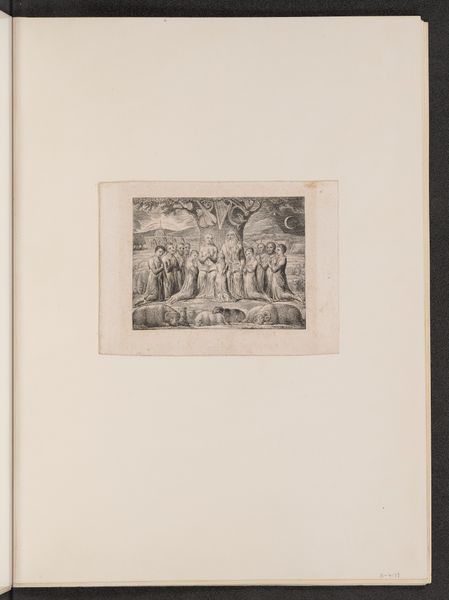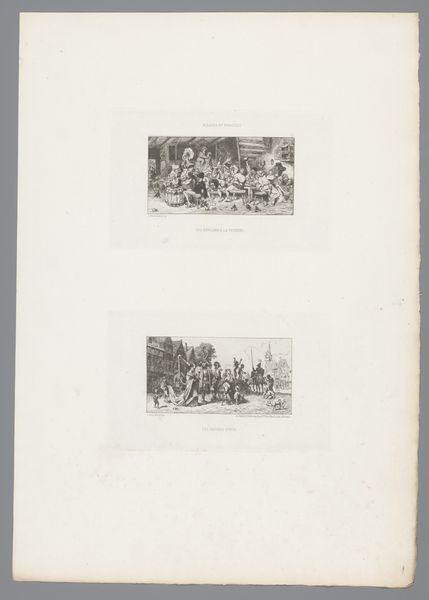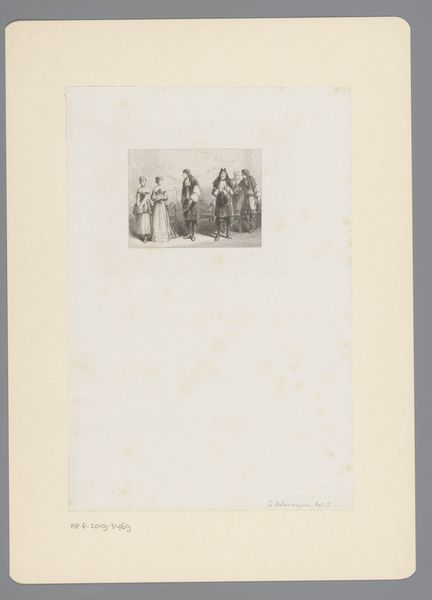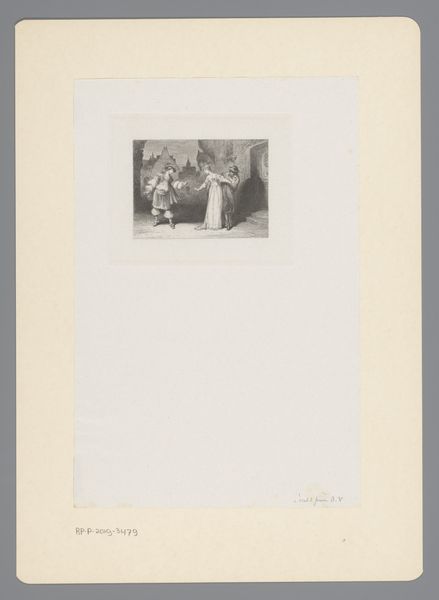
drawing, print, etching, pen
#
drawing
# print
#
etching
#
figuration
#
pen
#
history-painting
#
academic-art
Dimensions: height 108 mm, width 139 mm
Copyright: Rijks Museum: Open Domain
Curator: This is "Scapin lying on a litter" by Jean-Antoine-Valentin Foulquier, likely created between 1878 and 1879. The medium is a combination of drawing, print and etching enhanced with a pen. Editor: It’s interesting how much drama is captured with such delicate lines and soft grayscale. It has a decidedly somber and academic tone. Curator: Well, it seems Foulquier really wanted to showcase the history-painting aesthetic. But what stands out is the emphasis on the laborious process of etching, combined with drawing skills and then, finally the reproduction as a print. How accessible would such an image be to different strata of society? What workshops produced and distributed images like these? These are the interesting questions to ask, I think. Editor: I'm struck by the formal arrangement; the placement of Scapin centrally, prone and vulnerable on his litter, encircled by figures both concerned and accusatory. Semiotically speaking, that body tells its own story. It's almost theatrical, with the figure as spectacle, a focal point around which everyone's narrative converges. Curator: Sure, the artist deploys conventions of history painting to create this dramatic effect. However, I find myself thinking about Foulquier's involvement. Was he closely involved in each stage? To what extent did studio assistants play a role? That shapes how we perceive his "authorship," does it not? And of course, thinking of paper quality, the cost of inks and tools...these all matter to a fuller picture of the artwork's historical position. Editor: A fair point. But the artist clearly chose a historical event rich in expressive possibility, using form itself as the principal carrier of its social and cultural narrative. This is not documentary, it is a constructed scene. So yes, Foulquier probably sought to establish an equivalence, artistically speaking, between the act of suffering itself and this arrangement of shapes. Curator: For me, seeing this print opens a lot of considerations on materiality, reproduction, the economics behind the image-making. Editor: Whereas for me, its success relies on the potent deployment of those age-old themes like betrayal and pity using light, line, and shadow.
Comments
No comments
Be the first to comment and join the conversation on the ultimate creative platform.
